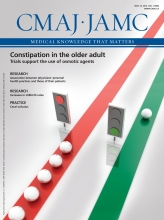Doctors, Dissection and Resurrection Men
Museum of London until April 14, 2013 London, UK
The Museum of London’s archivists, bioarchaeologists and conservationists have teamed together to present the story of anatomy, through documents, artefacts, bones and multimedia displays. The narrative unfolds room by room, from late Georgian England to the present.
At the beginning of the exhibition, we learn that by 1820 there were four hospital medical schools and 17 independent schools of anatomy operating in London. An 1827 Lancet article on the scarcity of anatomical subjects raises the question of how many bodies were needed. Ruth Richardson, author of Death, Dissection and the Destitute, writes that submissions by 12 London anatomy schools for 1826 “show that 592 bodies were dissected by 701 students.”
Until the 1820s, dissection had been a public event, a further punishment to the bodies of criminals. With the move to a more hands-on education, or the “Paris method,” the demand for bodies exceeded the supply from the scaffold. So how did doctors and their students obtain bodies for study?
The answer is nearby, in an 1825 pamphlet published by Ann Millard, in defence of her husband: An account of the circumstances attending the imprisonment and death of the late William Millard, formerly Superintendent of the Theatre of Anatomy of St Thomas’s Hospital, Southwark, re barter and sale of patients’ dead bodies from St Thomas, Guy’s and London hospitals, with original letters. According to William’s wife, he regularly received, on behalf of his employers, bodies not only from resurrection men but also from other hospitals. The pamphlet thus implicates the medical profession in the body trade.

A wooden dissecting table, 1750–1870.
Image courtesy of © Science Museum, Science and Society Picture Library
Resurrection men were those who “resurrected” the dead by lifting their bodies out of their coffins and selling them to anatomy schools. In the third exhibition room, the diary of one body snatcher, Joshua Naples, includes such entries as “Intoxicated all day. At Night went out and got 5.” Here too you can hear the Ballad of the London Burkers, about the murderers John Bishop and Thomas Williams, caught in 1831. Like William Burke and William Hare in Edinburgh two years before, they were hung for murdering to sell bodies for dissection. Burking became a word that fed rumour and fear.
The fourth room is dedicated to surgeons and surgery. Sir William Blizard, whose name was seen earlier in relation to Millard, Bishop and Williams, founded the London Hospital medical school in 1785. His colleague, Sir Atley Cooper, a prolific dissecter, “was himself buried within several coffins to safeguard his own body,” thus reflecting fear of disinterment. This room also displays tools of the trade and some beautiful specimens, including the skeleton of a boy whose parents donated his body to London Hospital, which was unusual then.
The catalyst for the exhibition is found in the fifth room: bones excavated in 2006 from a cemetery in use from 1825 to 1841 at the Royal London Hospital, formerly London Hospital. Bioarchaeologists found 262 burials and thousands of disarticulated bones, many showing signs of postmortem examination, such as dissection and amputation. (See also www.museumoflondonarchaeology.org.uk/NewsProjects/Archive/News08/royallondonhosptial.htm). According to Jelena Bekvalac, one of the two curators of the exhibition, the remains were buried in wooden coffins, each of which held the range of bones that would make up an individual body — except the bones were not from one individual.
The bones on display in five cases have been selected for their signs of disease and dissection. The display is discrete and educational, in compliance with ethical guidelines for museums. The bones are proof that the hospital was dissecting bodies of patients well before the Anatomy Act of 1832.
Meant to put an end to bodysnatching and burking, the Act permitted the dissection of bodies left unclaimed in hospitals, workhouses and prisons. Because only those who could not afford to bury their dead did not claim them, the Act made the poor more vulnerable to a fate they associated with criminals. Conflict of interest is also raised in the debate room: would a surgeon properly care for a patient whose body he needed for dissection? Fear of burkers gave way to fear of the institutions that sought control over human remains.
The only weakness in an otherwise absorbing exhibition was the lack of explanation about resurrection. Did Christians in the 1820s believe in the resurrection of the body? Or did they believe that resurrection was of the soul? Of the seven rooms in the exhibition, I found the first three the most interesting. “Must sees” are the iron coffin, the plaster-cast crucifix and the 3D virtual dissection.
Important questions are raised by the Wellcome Trust video at the end and the exhibition. Would “opting out” of organ donation create unwilling donors? If in future, when we can regenerate organs, will organ donation seem as reprehensible as burking? What is today’s heated debate about medical research and the integrity of the human body?

A Museum of London Conservation Team member works to preserve an iron coffin from a crypt in St. Bride’s Church, London, UK. Iron coffins were offered by undertakers as the ultimate deterrent to “burkers” who “resurrected” bodies from the grave to sell as anatomical subjects.
Image courtesy of © Museum of London
Footnotes
-
For additional resources see Appendix 1, available at www.cmaj.ca/lookup/suppl/doi:10.1503/cmaj.130324/-/DC1











